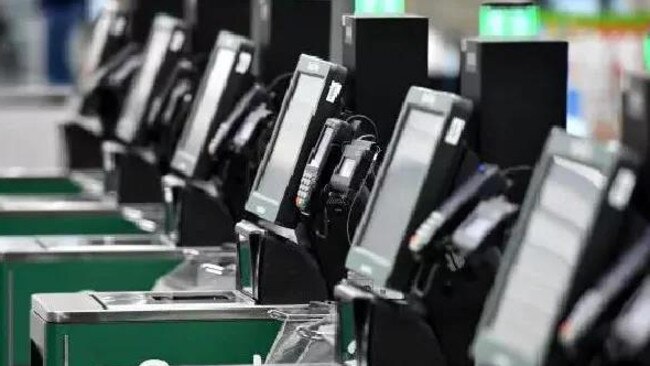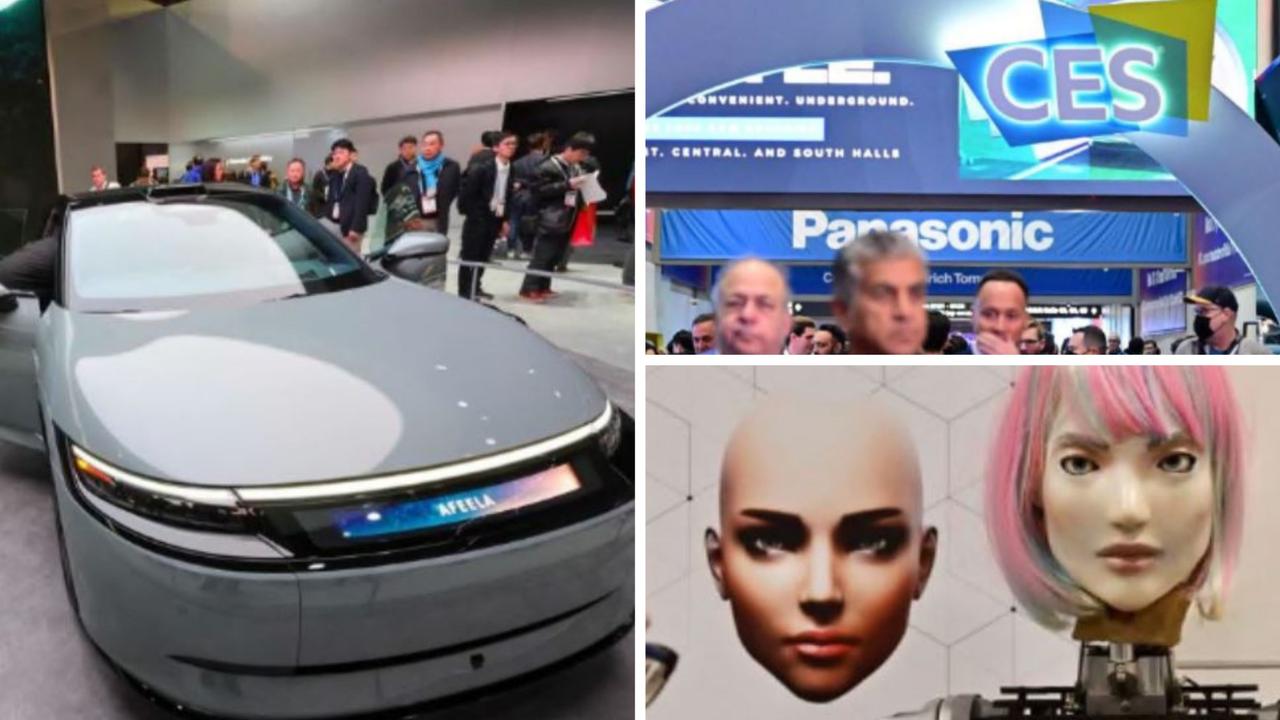How shoplifters justify theft at supermarket self-service checkouts
THE rise of self-service checkouts has turned more and more shoppers into thieves - because there are so many ways to fall into the shoplifting trap.

THE number of self-service checkout terminals around the world is predicted to reach 325,000 by 2019 and some stores have even become fully self-service.
But for some supermarket customers, the removal of checkout staff has been a green light for dishonest behaviour.
Based on research in this area, I developed an acronym to describe people who steal or give themselves a hefty discount at self-service check-outs: “SWIPERS” — or Seemingly Well-Intentioned Patrons Engaging in Routine Shoplifting. And they are costing the retail industry billions every year.
In Australia, theft costs retailers $9.3 billion each year, or 3 per cent of total annual turnover, and self-service checkout theft accounts for a decent proportion of this. And it is a problem that is not limited to Australia.
Customers are now relatively autonomous in the picking, payment and packing of goods they wish to purchase, but trusting them to process an honest and correct transaction is not without problems. The Home Office’s 2014 Commercial Victimisation Survey found that supermarkets with self-service checkouts are significantly more likely to experience shoplifting (86 per cent) than those without (52 per cent).

THE CARROT TRICK
A few years ago, I was working with retailers in Australia to reduce shoplifting, when one of the major supermarkets discovered that it had sold more carrots than it had ever had in stock. Puzzled by this development they looked into their inventories and found that in some cases individual customers were apparently purchasing 18kg of carrots in one go. Unfortunately this wasn’t a sudden switch to healthy eating or a desire to increase vitamin C intake, it was an early sign of a new type of shoplifter. Otherwise honest shoppers were using the self-service checkout to transact more expensive items — typically avocados — and put them through as carrots. The behaviour became a national epidemic, so much so, that the police launched a crackdown specifically on avo theft at the self-service checkout.
In the UK, surveys have revealed similar problems — one in five shoppers admit to regularly stealing when using the self-service checkout, approximately $26 per month, amounting to a staggering $2.8 billion worth of items every year. In fact, the extent to which this has become normalised has led some to suggest that the machines themselves are criminogenic, turning otherwise honest customers into “a nation of shoplifters”.
Self-service machines can be manipulated in many different ways. Other techniques include obscuring the barcode while mimicking the scanning motion, stacking items together so that only the bottom one is scanned, scanning items but not paying, or only partially paying, or entering the wrong quantity of loose items.

TYPES OF ‘SWIPERS’
In my research analysing surveys on this issue and what people admit to, I’ve divided “swipers” into four main groups.
1. ACCIDENTAL
Many “swipers” claim that they originally stole by accident, but when they realised how easy it was, it became a regular habit. In a 2014 VoucherCodesPro survey, 57 per cent of those admitting to theft when using self-scan machines claimed that they first stole goods by accident or because they couldn’t get an item to scan. Those who are not apprehended or punished are likely to revise down their risk assessment and continue to commit offences, so creating a spiral of escalating criminality.
2. SWITCHING
Peanuts are cheaper than pine nuts, loose tomatoes are cheaper than vine tomatoes, and of course, carrots are cheaper by weight than most other fruit and vegetables. Recognising this, many customers switch labels or deliberately input a different item on loose products. Perpetrators of this kind of “discount theft” do not necessarily view their actions as theft. Rather this behaviour is perceived as “cheating” the system rather than stealing — or as I argue, a way of “gasifying” an otherwise mundane routine. Since switchers do pay something for the goods, they often don’t consider it to be “real” theft.
3. COMPENSATING
Self-service usually results in fewer staff and more profits for the retailer, which for some “swipers” provides justification for their theft. Some customers believe that they should be “compensated” for having to process their shopping themselves when previously someone would have been paid to do it for them — it costs an estimated $US1 to check out a $US100 spend. So overall, losses through customer theft might be cheaper than the cost of paying cashiers.
There are also ideological motivations: a resentment towards the growing automation of jobs, and the domination of large supermarkets over small community businesses. It’s difficult to ascertain whether this group genuinely considers shoplifting to be a political act, or whether this enables them to continue to perceive themselves as honest and moral individuals.
4. IRRITATED OR FRUSTRATED
“Unexpected item in the bagging area” announces the machine accusingly as a red flashing light comes on. Perhaps unsurprisingly, self-service checkouts are now considered one of the most irritating features of modern life. Those who steal through frustration believe it’s justifiable in response to their experience at the store, and draw upon a range of excuses, or what are known in criminological parlance as “techniques of neutralisation”.
Justifications often include: “The item wouldn’t scan,” “The barcode was damaged,” and “I couldn’t find the correct fruit or vegetable”. It’s difficult to know if the customer originally intended to pay for the item or whether self-service checkout invited this type of excuse making, also found among many burglars.
5. PLEASURE-SEEKING SHOPLIFTING
Not all crime is rational or motivated by money. Some retail crimes are committed for more visceral reasons, such as armed robbers who like the adrenaline, power and control, even when the rewards are minimal. Recognising that transgression can be enjoyable provides some understanding as to why shoplifting is not solely the preserve of economically and socially disadvantaged groups stealing for subsistence.
In 2016, the Amazon Go concept store was unveiled with its “Just Walk Out” approach to shopping, using the same type of artificial intelligence technology used in self-driving cars to eliminate the need for checkouts. Shoppers download an app and are automatically charged for the goods they leave the store with — without the need for a checkout.
As a truly fluid and autonomous shopping experience looks set to be the next step in retail, augmented with biometrics such as facial recognition and artificial intelligence, only time will tell what new techniques the “swipers” will develop.
This story first appeared on The Conversation and is reproduced with permission.



